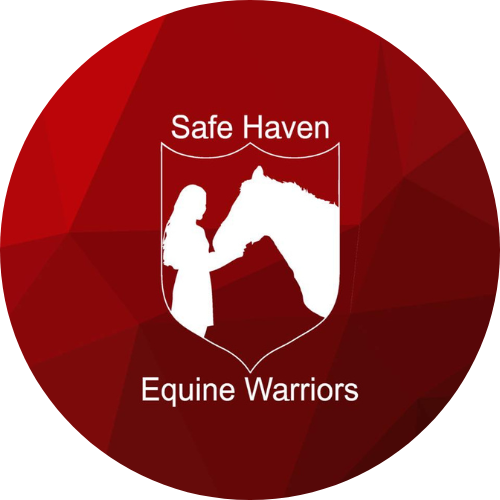HORSE SLAUGHTER
THE HARD TRUTH
60,000 - 80,000 American horses are sent to slaughter every year.
That’s more than 200 per DAY, and More than 1,500 per week. Supporters of horse slaughter put forth many arguments to support their position. In 2021 that number fell to around 36,000- still far too many.
But if you look at the facts, you'll see the truth: The slaughter of horses for meat is not only unnecessary and inhumane, it is also harmful in many ways.
Below are answers to some of the most common questions about horse slaughter. Once you learn the cruel truth, you'll understand why we must fight to ban horse slaughter in the U.S. and end the export of horses for slaughter abroad.
PLEASE BE WARNED, THE FOLLOWING VIDEO IS DISTURBING
Produced by World Horse Welfare and Animals’ Angels
IS IT POSSIBLE TO CONDUCT COMMERCIAL HORSE SLAUGHTER IN A HUMANE MANNER?
NO.
Horse slaughter, whether in the U.S. or foreign plants, was never and can’t be humane because of the nature of the industry and the unique biology of horses.
Slaughter is a brutal and terrifying end for horses, and it is not humane. Horses are shipped for more than 24 hours at a time without food, water or rest in crowded trucks. They are often seriously injured or killed in transit.
Horses are skittish by nature (owing to their heightened fight-or-flight response), which makes accurate pre-slaughter stunning difficult. As a result, horses often endure repeated blows and sometimes remain conscious during dismemberment—this is rarely a quick, painless death.
Before the last domestic plant closed in 2007, the USDA documented the slaughter pipeline was rampant with cruelty violations and severe injuries to horses, including broken bones protruding from their bodies, eyeballs hanging by a thread of skin, and gaping wounds.
The answer is not to return to subjecting our horses to abuse and unacceptable conditions at plants in the U.S. but to ban both horse slaughter and the export of horses for slaughter altogether and to provide our horses with decent lives and, when necessary, humane deaths.
DOES HORSE SLAUGHTER HAVE A NEGATIVE FINANCIAL IMPACT ON AMERICAN TAXPAYERS?
YES.
Subsidizing horse slaughter cruelty will divert precious financial resources away from American products and food safety. It makes no sense for the federal government to spend millions of taxpayer dollars to oversee new horse slaughter plants. At a time when Congress is focused on fiscal responsibility and the budget of the USDA’s Food Safety Inspection Service is already stretched thin, the USDA should not extend funding for a new program to slaughter horses—a practice that 80% of Americans oppose.
IS HORSE MEAT SAFE FOR HUMAN CONSUMPTION?
NO.
U.S. horse meat is dangerous to humans because of the unregulated administration of numerous toxic substances to horses before slaughter. In the U.S., horses are raised and treated as companion animals, not as food-producing animals. Unlike animals raised for food, the vast majority of horses sent to slaughter will have ingested, or been treated or injected with, multiple chemical substances that are known to be dangerous to humans, untested on humans or specifically prohibited for use in animals raised for human consumption.
Horses are gathered from random sources at various stages in their life, and there is no system in the U.S. to track medications and veterinary treatments given to horses to ensure that their meat is safe for human consumption. Due to concerns about the health threats of drug-laced horse meat, the European Union (EU), a primary importer of North American horse meat, suspended horse meat imports from Mexico—where 87 percent of horses slaughtered for export to the EU are of U.S. origin. EU authorities made the decision after a series of scathing audits that exposed a plethora of problems, including the lack of traceability of American horses and horrific suffering on U.S. soil and in Mexico.
Can the federal government ensure the safety of horse meat?
No. The USDA has no system in place to track horses’ lifetime medical histories, and the reputation of the entire U.S. meat industry is at risk.
Testing random samples of horse meat overlooks the fact that every single horse has a unique, unknown past. Unlike animals raised for food, horses do not spend their lives being prepared for the food chain. Every horse is a pet, riding companion, racehorse, show pony or work partner. Each may be a single patient to any number of vets, transferred by any number of owners, and has a unique life story. Relying on random-sample testing of horse meat is inadequate and dangerous.
Has ending domestic horse slaughter damaged the U.S. horse market and led to neglect and abandonment?
No. Horse neglect and abandonment cannot logically be attributed to the closure of U.S slaughter plants.
Horses are still being sent to slaughter, across our borders into Canada and Mexico, and the number of American horses sent to slaughter has not decreased since domestic plants closed in 2007. Clearly, any increase in neglect or abandonment—as well as any downturn in the horse market—is related to the economic downturn that began the same year that the last slaughter plant closed and continues today. Horse slaughter has never been, and will never be, a solution for abuse and neglect. Rather, the continued availability of horse slaughter has only enabled and perpetuated overbreeding, neglect and irresponsibility. As long as slaughter is an outlet for breeders to sell excess horses, they will be rewarded—and continue their irresponsible behavior.
Are there any other options for horses at risk of going to slaughter?
Yes. There are several ways to reduce the number of homeless or at-risk horses.
We can curb overbreeding, educate owners about other rehoming options and expand adoption work. Over 60,000 horses are sent to slaughter each year, and the vast majority would be re-homed; not every horse going to slaughter needs to go to rescue. The USDA documented that 92.3 percent of horses sent to slaughter are in good condition and are able to live out a productive life. These horses would be sold, donated or otherwise re-homed; however, kill buyers outbid legitimate horse owners and rescues at auctions, robbing horses of ever having a second chance at life.
The idea of slaughtering companion animals is unacceptable to the American people and will never be embraced. A 2012 national poll found that 80 percent of Americans support banning horse slaughter for human consumption. There are countries that consume dogs, cats and other pets as food, but we do not allow our dogs and cats to be exported for food purposes, even though there is a well-documented overpopulation issue to contend with for those animals.
FREE REIN
The latest video released to the public from Free Rein.
Will horse slaughter plants stimulate local economies?
No. Horse slaughter plants have proven to be economic and environmental nightmares for the communities that host them.
These plants pollute local water, decrease property values, permeate the air with a foul stench, drain local economies and damage the environment. The last three horse slaughter plants in the U.S. offered only a few low-income, dangerous jobs that did nothing to bolster local economies. Long before the plants closed in 2007, they had worn out their welcome. For example, in 2005, the City Council of Kaufman, Texas, home to the Dallas Crown facility, voted unanimously to implement termination proceedings against the plant. Paula Bacon, then mayor of Kaufman, stated, “As a community leader where we are directly impacted by the horse slaughter industry, I can assure you the economic development return to our community is negative.” Attracting new business was difficult for communities burdened with the presence of a horse slaughter plant due to the related negative stigma. Any minimal financial contributions of horse slaughter facilities are vastly outweighed by the enormous economic and development-suppressing burden they present.











